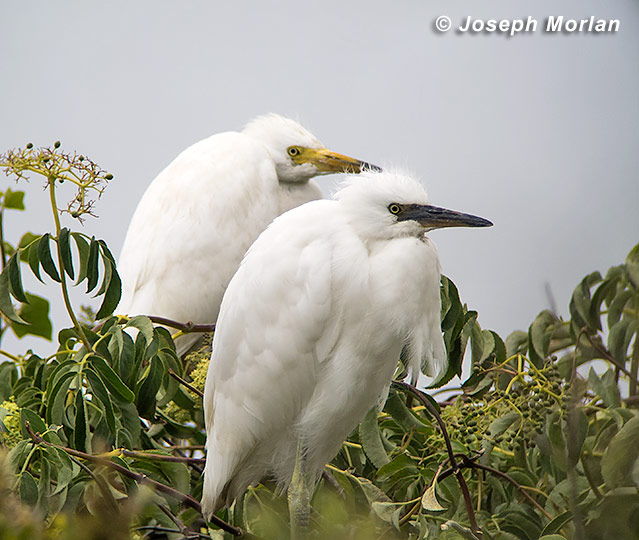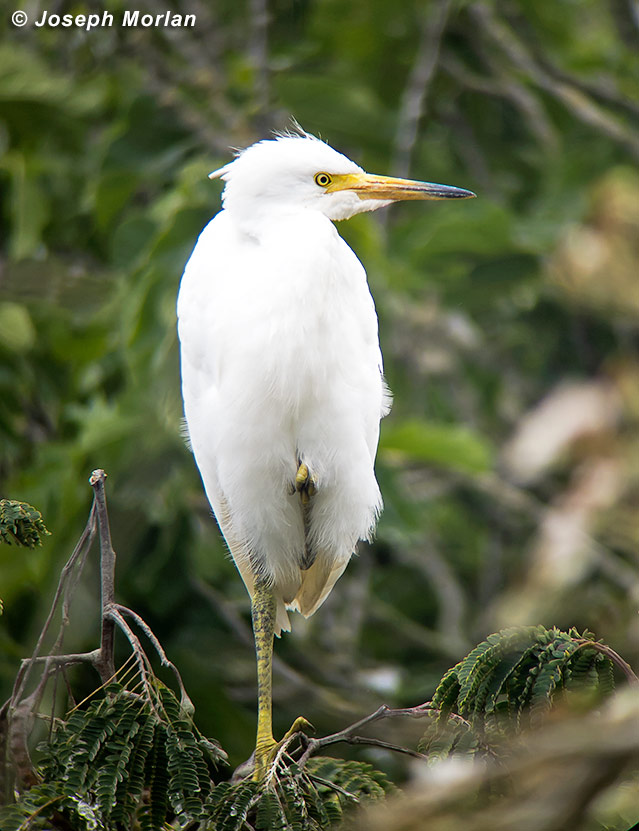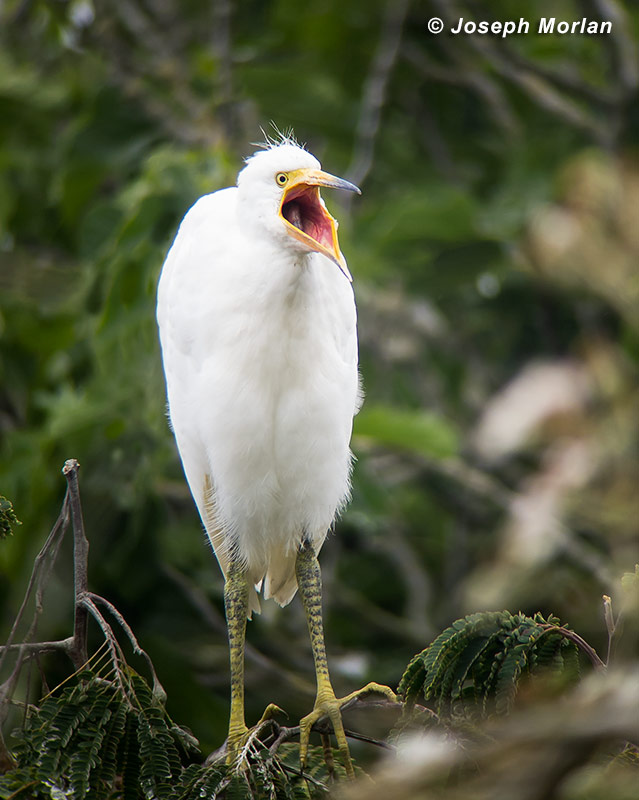
Yellow and black-billed Snowy Egrets.

Yellow-billed morph.

Yellow-billed morph.
About 20% of the juvenile Snowy Egrets in this colony had mostly yellow bills. Bill color varied tremendously with many birds having some dull yellow, while in others the yellow was much brighter. Most birds had greenish legs and feet with variable amount of dusky on the front of the tarsus.
BNA does not describe this variation, saying of juveniles, "By fledging, bill black, legs dark, becoming paler greenish yellow posteriorly, and feet dull yellowish." However, a detailed well illustrated article by W. McVaugh Jr., (1975. The development of four North American herons: II. Living Bird 14:163-183.) states that yellow-billed variants are present through fledging. Presumably, the bill turns black when the birds become fully adult, but it remains unclear exactly when that change occurs.
I believe such yellow-billed juvenile Snowy Egrets may be confused with other species such as Cattle Egrets or with hybrids.
Digiscoped with Panasonic DMC-LX5 | Nikon FieldScope III | 30XWA |hand-held (no adapter)